Last updated: March 3, 2022
Article
Hamilton Grange Parlor Collection
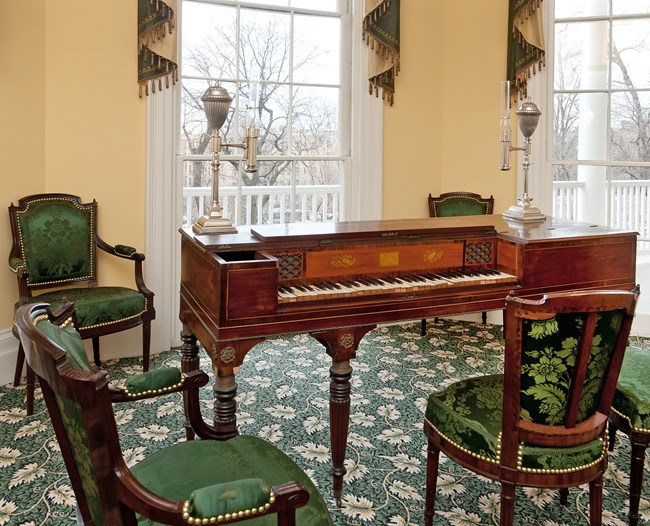
NPS photo
Pianoforte
The first reference to this piano appeared in a 1794 letter from Angelica Schuyler Church to her sister, Elizabeth Hamilton. In this letter, Angelica expressed her wish to purchase a piano for her niece, Angelica. “Angelica shall have the very best piano that can be made in London,” she wrote. The square piano was then purchased from Clementi and Co. It was shipped to New York around 1795, where Hamilton paid a small customs fee to retrieve it.
At the time, square pianos were approaching peak popularity in Europe and North America. This instrument was sought after for its well-rounded sound and modern capabilities. It was also lightweight and much smaller than other keyboard instruments that preceded it.

New York Historical Society
Angelica enjoyed the piano and was proficient in it; she was known to play duets with her father and brother, Philip. She is remembered as a bright and charming young woman. Hamilton wrote to Angelica, “the best way is to act with so much politeness, good manners, and circumspection, as never to have occasion to make any apology. Your mother joins in best love to you.”
With the untimely passing of Philip in 1801, the entire Hamilton family suffered a great loss. Some secondary sources indicate that Angelica experienced a lapse in mental health around this time; it is unclear whether this event precipitated a lifelong affliction.
However, Angelica's parents continued to dote on her. In 1802, Hamilton wrote Charles Cotesworth Pinckney, “my daughter adds another request, which is for three or four of your peroquets (parakeets). She is very fond of birds. If there be any thing in this quarter the sending of which can give you pleasure, you have only to name them."
Later in life, Angelica resided permanently at a New York psychiatric ward. Her piano stayed with her at the home, and family members recall that she retained her skill and love of music throughout her life. She enjoyed playing music contemporary to the time she, her father, and her brother shared together. Nearing the end of her life, Elizabeth Hamilton, Angelica’s mother, requested in her will that her children be “kind, affectionate, and attentive” to Angelica.
After Angelica’s death, the piano was donated to the American Scenic and Historical Preservation Society by a great-great-granddaughter of Alexander Hamilton. Today, its presence in The Grange reminds visitors of the strong familial bonds shared by the Hamiltons.
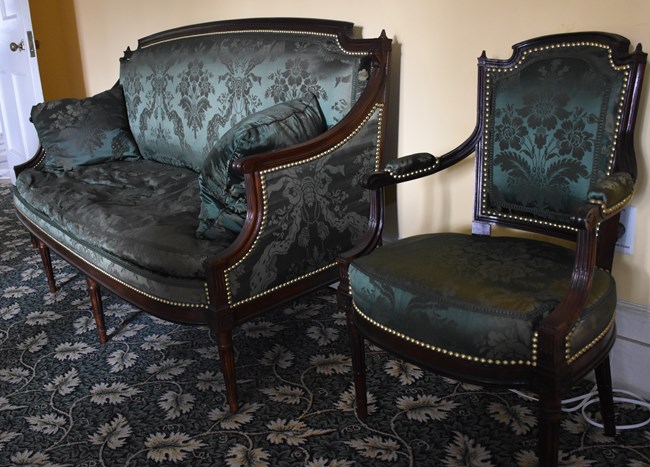
NPS Photo
Furniture Suite
In the parlor of The Grange is a furniture suite that highlights Hamilton’s aesthetic sense as modern to his time.
In the last years of the 18th century in America, popular preference for furniture shifted to the Neoclassical style, inspired by the principles of Greek and Roman Classical style architecture. In contrast to the ornate Rococo style that preceded it, the Neoclassical style contains straight lines, fluted surfaces, rigid textures, and discreet ornamentation. Sometimes called Louis XVI-style, this style of furniture became popular in Europe in the mid-18th century and was popularized in the young United States by immigrants with both skill in constructing furniture in this style, and demand as consumers for the popular styles of Europe.
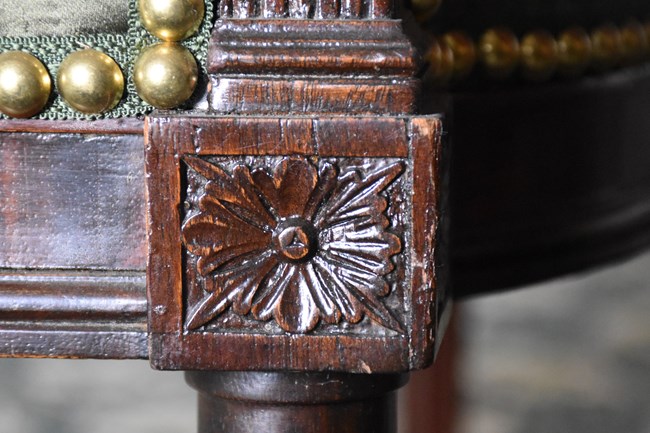
NPS photo
The maker of this furniture suite is Adam Haines, a Philadelphia cabinetmaker who Hamilton probably met during his work at the Constitutional Convention or as Secretary of Treasury. The suite was most likely constructed between 1790 and 1795 and shipped to New York.
In the 1970’s, two armchairs and three side chairs from the collection were donated to Hamilton Grange National Memorial. Other pieces from the complete collection had been donated to the Smithsonian Museum and the Museum of the City of New York. Because the complete collection of furniture has been dispersed, several of the pieces have been faithfully replicated in order to represent the complete collection. The known collection consists of four armchairs, five side chairs, and one sofa.
Today, this collection preserves the tastes of the fledgling United States.
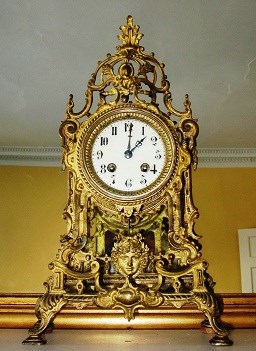
NPS Photo
French Mantel Clock
Date: c. 1800
Description: The clock works are contained within a cylinder that is held with an elaborate, brass, rococo open case with foliate decoration. The pendulum is a heavy gauge wire that terminates in a relief of a face, probably intended to represent an ancient god. The clock chimes on the hour and the half hour. The face is white with black Arabic numbers. Two winding ports are presented on the lower face. A marble shelf sits in the lower portion of the case. A key is present.
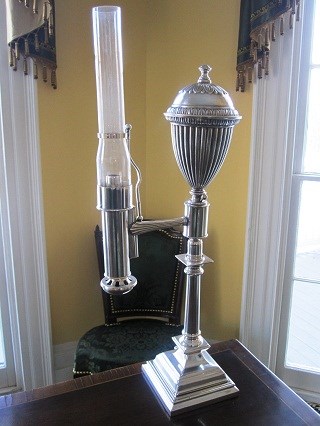
NPS Photo
Silver-Plated Argand Oil Lamp
Date: early to mid 19th century
Description: Each lamp has a slender, round column topped by an urn-shaped reservoir with fluted sides and an urn finial. The base is square. Extending sideways from a cylinder below the reservoir, a fluted arm supports the cylindrical burner, topped by a glass chimney. Air holes pierce the bottom of the burner. The chimney widens at the bottom and is held in place by a ring mounted on an armature attached to the support. The chimney is removed by unscrewing the ball that holds the ring in place. A similar ball on a short armature is at the base of the reservoir and was used to regulate fuel flow, but is now soldered in place. There are felt covers on the bottom of both lamps. The wick holder has been replaced by a socket for an electric light bulb.
